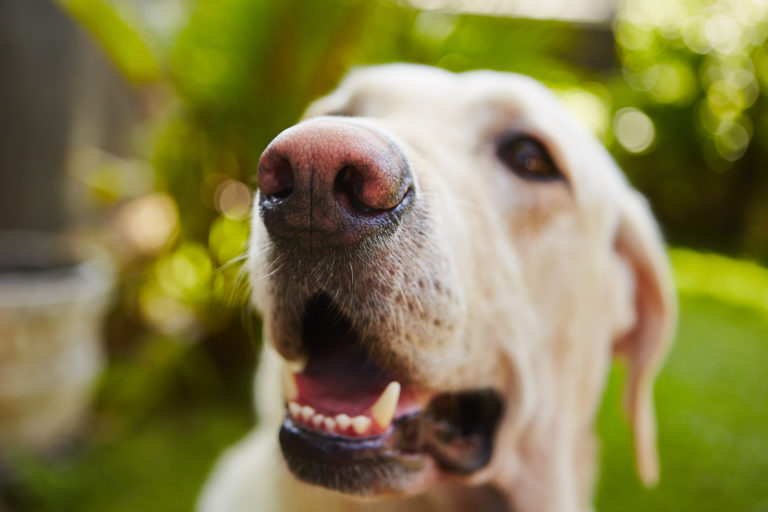The thing that fascinates us humans about dogs is their enormous sensory capacity. Their senses are far better developed than those of humans, to the extent that they can orientate themselves, recognise everything and everyone by smells, and hear sounds and noises we cannot even comprehend.
A dog sees the world through its nose
While the most important sensory organ for humans is the eye, dogs rely much more highly on their noses. Through its nose, a dog can discover, decipher and experience its entire environment. The nose acts as an information centre, binoculars and a warning system all in one. A dog is not only able to smell much more acutely than a human, but can also interpret the specific nuances in each sniff. Through its nose, a dog can sense whether we are angry or anxious, how old a track is, any news that other dogs have left behind, and even whether there is a human being buried under a snowpack. When it comes to sniffing out the world, dogs have mastered the art, no matter whether scents are lying on the ground or floating through the air.
Canine ears can achieve incredible things
When it comes to hearing, dogs are also much more accomplished than human beings. They have 17 muscles that are solely reserved for moving their ears, and dogs with naturally standing ears can use them as radar screens to work out where noises are coming from. Canine ears are not only superior in anatomical terms, but also in absorbing vibrations. Whilst the average human ear cannot perceive anything higher than 20,000 hertz, a dog’s ears can hear twice that frequency. This is the reason that high-frequency dog whistles are so effective! As with smells, a dog is also much more adept at differentiating between different sounds than we are. It can distinguish engine noises like a car expert, can detect steps from a great distance, and knows whether it is the postman or the milkman approaching the house. No wonder we humans have entrusted our dogs with the role of guarding our homes!
A dog’s sense of taste
Interestingly, the sense of taste plays a far less important role for dogs, with the tongue having two key additional purposes. Firstly, it helps with fluid intake, as it has extraordinary mobility and serves to scoop water into the mouth. Its second purpose is to help your dog cool down by panting, with water evaporating on the tongue. Naturally dogs are also capable of tasting extremely well – and they make it very clear when they do not like the food you have chosen for them! However, this tasting ability is closely linked to the sense of smell, and if the food does not smell good the sense of taste will generally no longer be used.
Eyesight less pronounced
As far as eyesight is concerned, dogs are at a disadvantage in comparison with humans. Their long-distance sight is not particularly proficient, nor can they quickly see objects nearby. Greyhounds, with their narrow heads, have an unusually wide field of vision of around 270°C, even able to see to the rear, but this is the exception in terms of canine sight. In general, vision for dogs focuses around movement, which a dog can adjust to swiftly and almost automatically. This is why the majority of breeds make effective guide dogs. The lack of far-sightedness can easily be compensated for with your dog’s nose and a clear wind.
Fascinating interaction
Above all of these special sensory achievements, the thing that fascinates us most about dogs – and, in fact, about animals in general – is their astonishing interactions that often make them appear as though they have a seventh sense. How does a dog know that we are planning to leave the house soon? How do birds find their way back home after migrating for winter? And how does a goose know that a fire is breaking out nearby? These skills that are taken for granted by animals appear almost magical to us humans!
